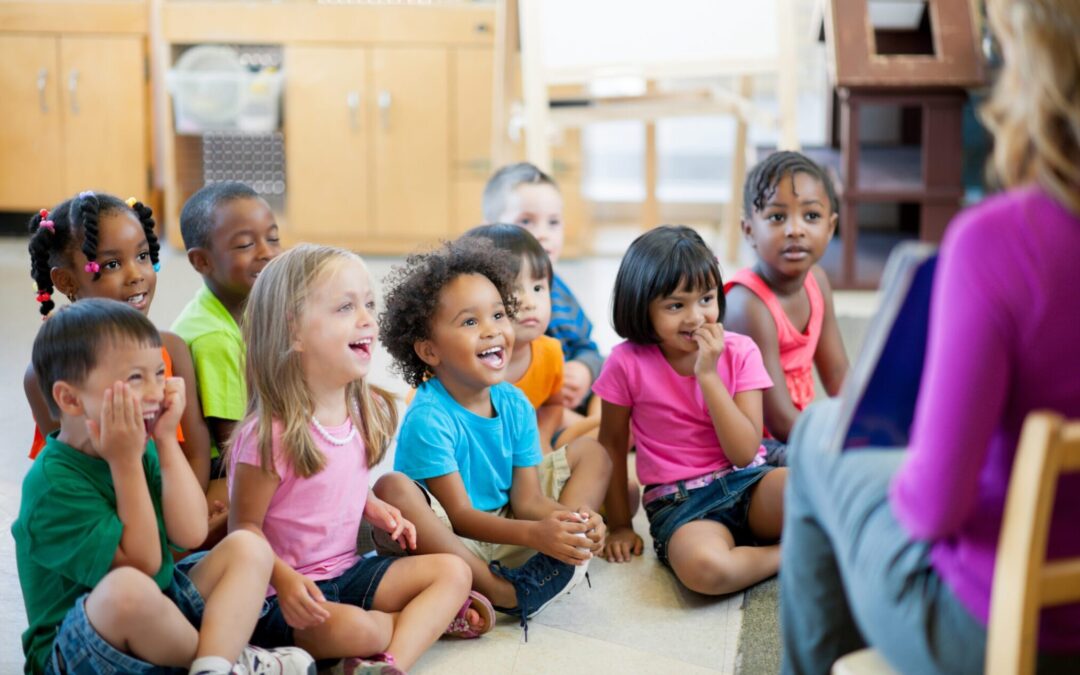As public pre-K programs expand across the nation—particularly under policies like Maryland’s Blueprint for the Future—it has become increasingly important for families to understand how public and private options compare. While both types of programs share the goal of preparing children for kindergarten, they differ significantly in access, curriculum, class environment, and, most importantly, long-term readiness.
Public pre-K is growing rapidly, with states investing billions to broaden access and ensure more children can benefit from early learning. In Maryland, for example, the Blueprint for the Future calls for half of all pre-K slots to be offered through private providers by the 2026–27 school year, up from 30% just a few years ago. The funding model is designed to support families equitably: those earning up to 300% of the federal poverty level qualify for free, full-day pre-K, while families between 300–600% of the threshold receive reduced tuition, and those above pay full cost. This sliding scale, paired with a mixed-delivery system, is meant to make preschool more inclusive while giving families more choices. The strength of public pre-K lies in its accessibility, affordability, and alignment with state education standards. However, quality can vary significantly from one program to another, with larger class sizes and less curriculum flexibility sometimes limiting the experience.
Private pre-K, on the other hand, often provides a different type of learning environment. Smaller class sizes allow teachers to know each child more deeply, supporting both academic growth and social-emotional development. Because private programs are not bound by state-mandated curricula, they can incorporate enriched learning opportunities like foreign language, STEM, or arts-based instruction. Families often find that private programs also encourage more direct parent-teacher collaboration, offering consistent communication and individualized developmental plans. These factors combine to create a holistic approach to early education that prepares children not just for the academics of kindergarten, but also for the independence, confidence, and self-regulation skills they need to thrive.
The question many families ask is: which option better prepares children for kindergarten? Data from the Maryland State Department of Education (MSDE) provides some insight. For the 2016–2017 school year, children who attended private nonpublic nurseries or childcare centers demonstrated higher kindergarten readiness rates than those in public pre-K programs. While more recent readiness data is not consistently published by program type, these findings suggest that private early childhood education has historically offered a strong foundation for school success. At the same time, newer examples show that high-quality public programs can deliver impressive results. In 2024–25, Baltimore City Public Schools reported a kindergarten readiness rate of 53.4 percent—a nine-year high. Students in Judy Center pre-K programs (state-funded early learning hubs in Maryland, located in or near Title I schools,) were 28.1 percent more likely to demonstrate readiness, and those in other City Schools pre-K programs were 24.6 percent more likely to be ready compared to peers who attended private or home-based care. These local outcomes highlight that when public programs receive sufficient resources and structure, they can match or even surpass private counterparts in preparing children for school.
As Celebree’s Director of Education, Kristen Miller notes, quality is the critical factor. “When we look at readiness outcomes, the common thread isn’t whether a program is public or private, it’s whether children receive intentional, individualized support in both academics and social-emotional growth. Families should ask about class sizes, teacher training, and how children are prepared for the transition into kindergarten.” This perspective underscores what the research suggests: it is not the label of “public” or “private” that determines success, but rather the quality of teaching, environment, and support provided to young learners.
Celebree School has built its reputation on that commitment to quality. Our organization is accredited and currently maintains a 5.2 average CLASS score company-wide, significantly higher than the national average of 4. CLASS, or Classroom Assessment Scoring System is a tool that evaluates and supports teacher-child interactions across Emotional Support, Classroom Organization, and Instructional Support domains. Trained observers rate each dimension on a 7-point scale, with scores of a 5 or more representing effective and high-quality interactions. This benchmark reflects not only the strength of its teachers and curriculum, but also the consistency of its nurturing classroom environments. Families can also expect a community-driven approach, with programs designed to involve parents directly in their child’s learning journey through family engagement days, local partnerships, and community events.
Ultimately, both public and private pre-K play important roles in today’s education landscape. Public programs expand access, reduce inequities, and provide a critical service for families who might otherwise lack resources. Private programs offer enriched learning environments, greater flexibility, and more opportunities for individualized attention. For families making this important choice, the focus should be on:
- Program quality
- Teacher credentials
- Class sizes
- Parent partnerships
- Balance of academic and social-emotional learning
These are the factors that best predict kindergarten readiness and, more importantly, set children on a path to long-term success in school and beyond.

